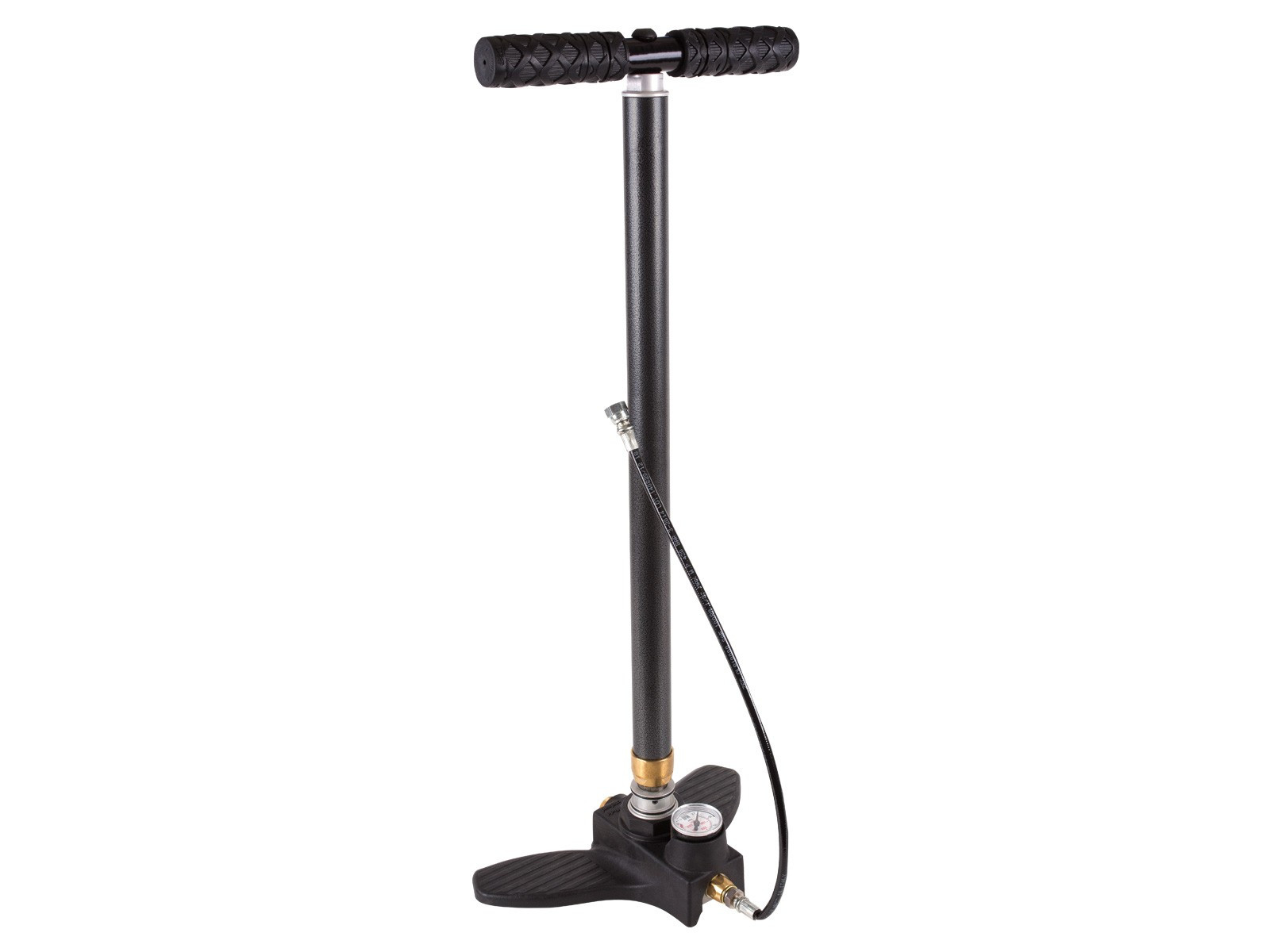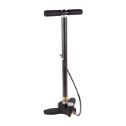PCP airguns sit at the top of the airgun food chain. They produce the most power and accuracy with the least amount of effort on the part of the shooter. But with the good comes the challenge. You have to fill them, and this continues to be the biggest barrier to entry for those looking to dip their toe into the wonderful world of PCP airguns. Fortunately today, there are many affordable ways to overcome this barrier.
Today we’ll look at the lowest cost option, the simple 3 stage hand pump, and discuss how it gets the job done.
Beyond a Bicycle Pump
The design is the same, but the function is very different. Much like the difference between a single-stage compressor and a multi-stage compressor, the typical hand pump and a three-stage HPA hand pump are very different.
A typical hand pump draws air in during the up-stroke of the handle. When you push down, a check valve or one-way seal prevents the air from going back the way it came in. Rather, the air is forced out the outlet into the vessel you are trying to fill. A “good” bicycle hand pump may top out at around 150 PSI. Actually, that’s pretty similar to your typical home pancake compressor. But PCP airguns need a lot more pressure.
Required PSI
Your typical PCP airgun operates at 200 bar, which is about 2900 PSI. When a normal hand pump only makes 150 PSI, how do you expect to get up near 3000 PSI? You use the same concept as you would with a multi-stage compressor. SCUBA compressors can make pressures in excess of 4500 PSI. They do this by combining multiple stages where each stage builds upon the last. So instead of one inlet, check valve, and outlet, you now have multiple.
Air is drawn into the first chamber. The one-way valve prevents the air from going back out and rather directs it into the 2nd stage chamber where another piston and check valve performs a similar task. Then the air is pushed into the 3rd stage for the final compression.
The volume of each subsequent stage gets smaller because it’s under greater pressure. A compressor may perform this process about 900 times per minute, which is how they are able to fill so quickly.
Getting 3000 PSI
A three-stage hand pump works exactly the same way. You happen to be the “motor” that makes it all work. As you pull upward, the air is drawn into the first chamber. When you push downward, the air is cycled into the next chamber. When you pull upward again, it’s moved yet again to the 3rd chamber. When you push down on the final stroke, the air is forced out the outlet into your airgun. Each stage builds upon the previous, which allows you to create very high-pressure air needed to fill your PCP airgun.
You may not get a lot of volume on each stroke, but you can get the necessary pressure with a lot of effort and patience.
Differences Between Hand Pumps
Today there are many PCP hand pumps on the market. This is one area you don’t want to compromise when making your purchase. The Hill hand pump is probably the best hand pump on the market. It’s one of the most expensive too, but you really get what you pay for here. While most PCP airguns need 2900 to 3000 PSI, more and more are being made to operate at much higher pressures.
The Air Venturi Avenger is a good example of a new airgun built to operate well above 3000 PSI. It’s not a “high-end” airgun. Rather, it’s one of the most affordable PCP airguns currently available. It comes standard with an externally adjustable regulator and hammer spring, which allows shooters to dial in more power or more shots according to their particular needs. With a regulator, you can push the pressure in the tank well beyond what would normally cause valve lock with non-regulated guns.
So, where before an airgun like the Avenger would only need 3000 PSI, the Avenger is built to operate at 4325 PSI. Fortunately, the Hill Hand pump, with its UK engineering, is designed to handle those pressures with relative ease.
Are Personal Compressors Better?
Hand pumps are an important backup plan for folks who don’t want to go without the ability to fill their airguns. Sure there are many affordable personal compressors on the market these days, but they all need some sort of electricity, whether AC or DC, to make that precious HPA that feeds our airguns.
As long as you have the will and a hand pump, you can still go out hunting or target shooting.
A good multi-stage hand pump like the ones from Hill (the Air Venturi MK4 and MK5 are made by Hill) is a must-have for any PCP airgun owner. They may take work (In our personal experiences, we are happy to report that Hill Pumps fill more quickly and with less effort than the less expensive options on the market), but they also let you be completely self-sufficient.
As always, if you need help choosing the right fill option for your needs, just give us a call or drop us an email. We are always eager to help.

